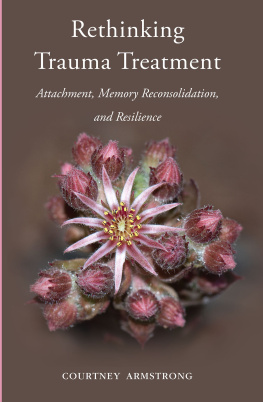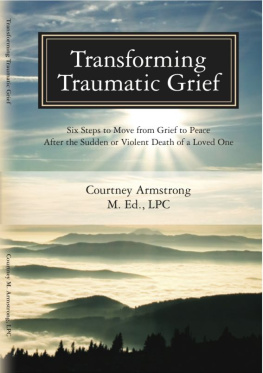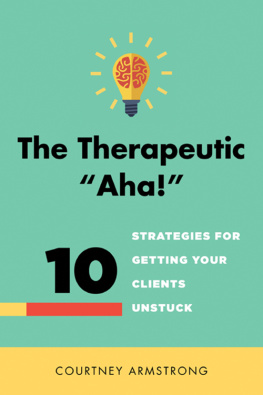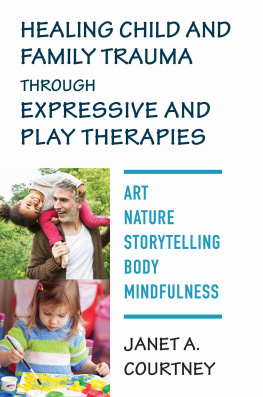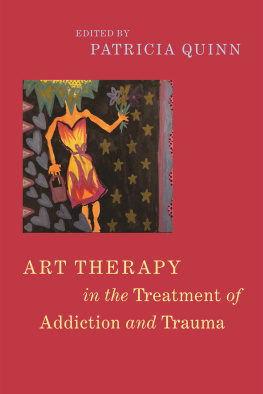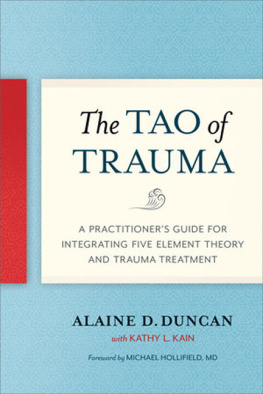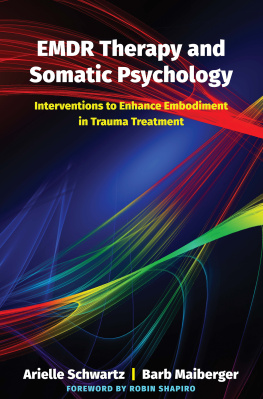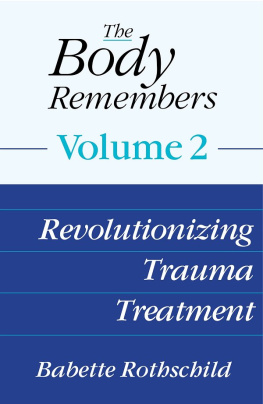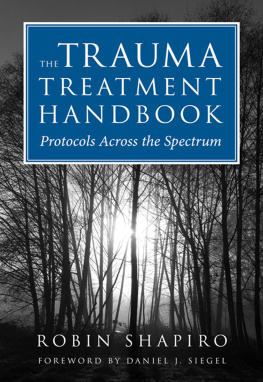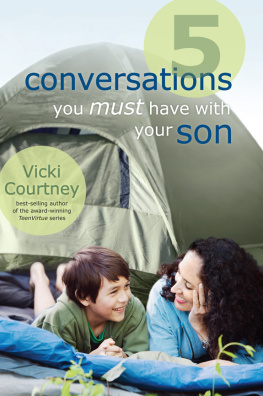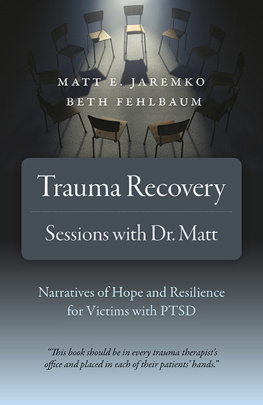
RETHINKING
TRAUMA TREATMENT
RETHINKING
TRAUMA
TREATMENT
Attachment, Memory Reconsolidation,
and Resilience
Courtney Armstrong

W. W. NORTON & COMPANY
Independent Publishers Since 1923
New York London
A Norton Professional Book
To all trauma survivors and the helpers who
serve them. You are living examples of triumph
and courage in the face of adversity. Thank you
for your strength, wisdom, and compassion.
Neuroscience discoveries over the last 20 years have given us new insight and hope for healing trauma. Weve learned how trauma disrupts healthy attachment and impacts the brains ability to regulate itself, but weve also learned interventions that can help the brain heal and repair attachment wounds. Scientists once thought traumatic memories were indelible, but now theyve shown the brain actually has an innate process for assuaging painful memories, called memory reconsolidation. Weve learned that trauma can have positive effects on people, too. Research has shown a large number of people developed increased inner strength, greater appreciation for life, closer relationships, spiritual growth, and an openness to new possibilities after trauma.
While all these discoveries are promising, its hard to know how to translate these scientific revelations into practical applications we can use in our sessions. Hundreds of new trauma therapy methods have emerged, leaving therapists encouraged, but confused. Which trauma therapy method do I use? Do I need to get trained in all these various approaches to be effective? How do I do this with the limited time and resources I have?
Ive written this book to offer answers to these questions for you. Over the past 20 years Ive trained in a variety of trauma therapy approaches, attempted to keep up with all the neuroscience, and learned what works best from my clients experiences. This book gets you up to date on the brain science, provides you with practical strategies, and focuses on what the best trauma therapy methods have in common. You dont need to go get any more specialized training to help your clients right now. Youve got the essentials right here and can use them as stand-alone interventions, or integrate them into therapy approaches you already use.
Rethinking Trauma Treatmentis divided into three sections that parallel the three phases of trauma-informed therapy. Phase I: Create Safety, Hope, and Therapeutic Alliance gives you the foundation for understanding the neurobiology of trauma, establishing a strong therapeutic alliance, and tools for helping clients access hope and regulate strong emotions. , Attachment and the Brain, discusses how childhood trauma impacts brain development and explains why survivors of complex trauma have difficulty regulating their emotions and forming healthy relationships.
If you find brain science boring and want to jump into techniques and interventions, you can start with , How to Engage Insecure Attachment Styles, I explain why your empathic presence may not be enough to connect with traumatized clients and discuss how to secure an alliance with people who have avoidant-dismissive, anxious-preoccupied, and disorganized-unresolved attachment styles.
, Instill Hope and Empowerment, gives you techniques and guided imagery scripts for helping clients recognize their strengths, access positive emotions, and create their desired futures.
Phase II of the book, Transform Traumatic Memories, gives you the nuts and bolts of reprocessing traumatic memories. , Sexual Trauma, addresses the common issues clients experience after sexual assault or abuse. I demonstrate how to use memory reconsolidation to heal different types of sexual trauma, and interventions that help survivors shed shame, repair attachment wounds, and reclaim their identities.
, Combat Trauma, addresses how to work with the war memories, flashbacks, and survivors guilt that often plague soldiers and veterans.
Phase III, Facilitate Post-Traumatic Growth, discusses how to help clients thrive beyond trauma. , Counter Compassion Fatigue, gives you tools for managing your own vitality and stamina, so you can continue offering the world your gifts.
Choosing to be a trauma therapist takes courage and compassion. Its challenging, but its also the most meaningful and rewarding work youll do. I am hopeful this will be a supportive and useful resource to you. Think of it as your on-the-fly guide to trauma therapy that you can refer to when you need ideas, techniques, reassurance, and encouragement. More important, youll learn why youare your most valuable tool when it comes to treating trauma.
Next page
